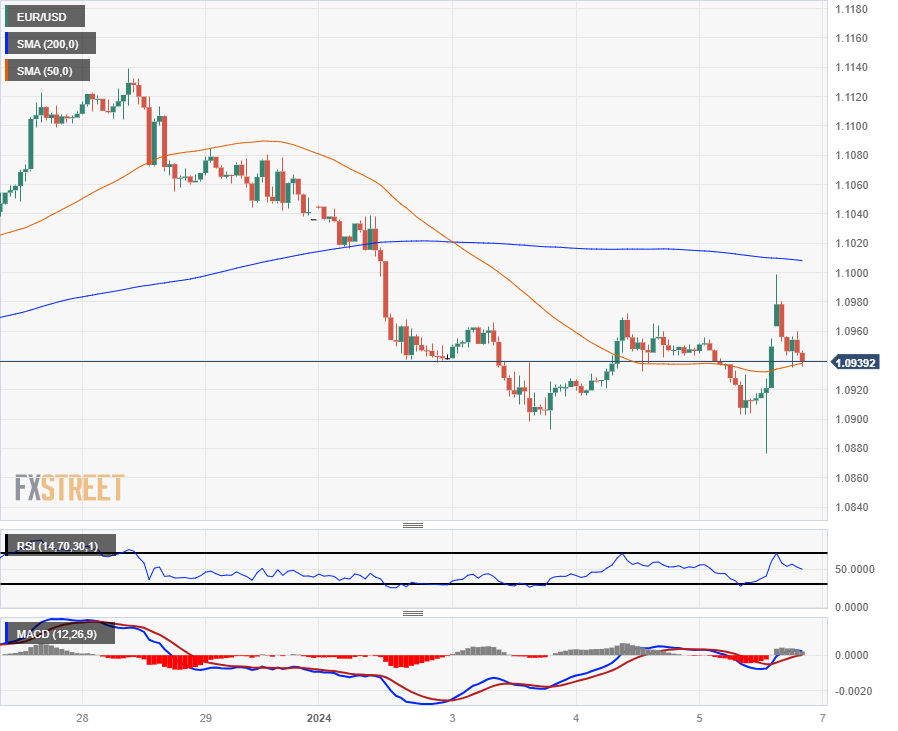On Friday, the EUR/USD exchange rate plummeted to its lowest point in three weeks. This decline was triggered by a rebound in European inflation. The Eurozone’s inflation rate, measured by the Harmonized Index of Consumer Prices (HICP), rose to 2.9% in December, up from 2.4% in November.
While the forecasted inflation rate was 3.0%, higher inflation levels make it less likely that the European Central Bank (ECB) will cut interest rates to lower borrowing and lending costs.
The EUR/USD pair, after its initial decline due to inflation concerns, experienced a rapid rally, reaching a three-day high of 1.1000. This rebound was sparked by the release of strong US Nonfarm Payrolls (NFP) data. The US economy added 216K jobs in December, far exceeding the predicted 170K. Additionally, the average hourly earnings data showed a rise to 4.1% for the year ending in December, surpassing the predicted downturn to 3.9%. This data pushed earnings slightly above the 4.0% reported in November.
The encouraging NFP report dampened expectations of interest rate reductions, with the Federal Reserve (Fed) less inclined to cut rates as long as the US domestic economy maintains its trajectory toward stable growth and avoids a potential recession in 2024. Prior to the NFP data, money markets had anticipated a 90% chance of a rate cut at the Fed’s March meeting. However, following the strong NFP results, those odds have dropped to around 60%.
Despite the positive labor report, the US ISM Services Purchasing Managers’ Index (PMI) for December fell further than expected, registering at 50.6 against a projected 52.6. This decline follows a downward trend from 52.7 in November, resulting in a seven-month low.
Revisions to official labor figures have also created uncertainty, with the November NFP being significantly revised down from 199K to 173K and October’s NFP being further adjusted down from 150K to 105K.
The coming week will bring European Retail Sales figures along with a variety of confidence and sentiment readings from consumers, manufacturers, and industrial sector participants. US data will be limited until the release of the US Consumer Price Index (CPI) on Thursday. The annualized headline US CPI is预计from 3.1% to 3.2%.
Technically, the EUR/USD pair, despite its late surge on Friday, remains below the 200-hour Simple Moving Average (SMA) just above the critical 1.1000 level. The pair is currently consolidating between the 200-hour SMA and the 50-hour SMA near 1.0940.
The EUR/USD saw a decline from 1.1040 on Monday and held steady through Wednesday’s trading. The 1.0900 level acts as a near-term technical barrier.
On the daily chart, the EUR/USD pair is consolidating just above a bullish cross of the 50-day and 200-day SMAs near 1.0850. Buyers will be looking to capitalize on this technical confluence to gain momentum for another attempt at December’s peak near 1.1140.
EUR/USD Hourly Chart
